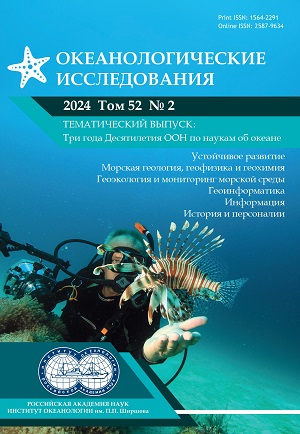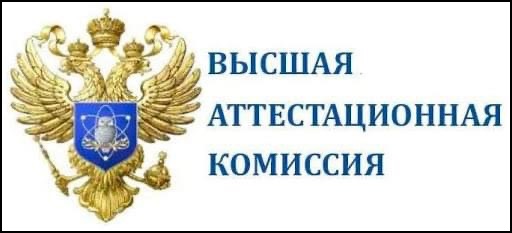КОМПЛЕКСНЫЕ МНОГОДИСЦИПЛИНАРНЫЕ ИССЛЕДОВАНИЯ И МОНИТОРИНГ ЭКОСИСТЕМ СЕВЕРНОГО ЛЕДОВИТОГО ОКЕАНА И ЕГО МОРЕЙ
Аннотация
«Комплексные многодисциплинарные исследования и мониторинг экосистем Северного Ледовитого океана и его морей» – это один из проектов, организуемых в рамках Программы Десятилетия ООН наук об океане. Одна из основных целей этой программы – создание эффективной системы мониторинга и прогнозирования состояния морской среды, обеспечивающей накопление и обмен новыми знаниями о природе, экологии и экономике Мирового океана для устойчивого развития хозяйственной деятельности и принятия государственных решений. Научно-исследовательская станция «Северный полюс-41» на базе НЭС «Северный полюс» находится в арктическом дрейфе с начала октября 2022 г. в акватории Евразийского бассейна Северного Ледовитого океана (СЛО). Научная программа экспедиции включает более 50 видов исследований и наблюдений, которые выполняются на борту судна и в организованном на базовом ледовом поле научном лагере. Основной целью работ станции «Северный полюс-41» является выполнение комплексных междисциплинарных исследований в системе «атмосфера – ледяной покров – океан» в высоких широтах Северного Ледовитого океана в годовом цикле. Исследования направлены на выявление закономерностей действия физических механизмов, ответственных за развитие сезонных процессов и формирование межгодовых изменений во взаимодействующих геосферах. Таким образом, экспедиция «Северный Полюс-41» является основным «плацдармом» для выполнения задач Программы Десятилетия ООН наук об океане в Северном Ледовитом океане. В настоящей статье кратко изложена информация об основных исследованиях, проводившихся в экспедиции в 2022–2023 гг.
Литература
- Ашик И. М., Алексеев В. В., Блошкина Е. В., Кулаков М. Ю., Махотин М. С., ТарасенкоА.Д., Фильчук К. В. Состояние и перспективы развития системы мониторинга гидрологических условий акватории Северного Ледовитого океана // Проблемы Арктики и Антарктики. 2022. Т. 68. № 1. С. 8–25. https://doi.org/10.30758/0555-2648-2022-68-1-8-25.
- Ашик И. М., Иванов В. В., Кассенс Х., Махотин М. С., Поляков И. В., Тимохов Л. А., ФроловИ.Е., Хелеманн Е. Основные результаты океанологических исследований Северного Ледовитого океана в последнее десятилетие // Проблемы Арктики и Антарктики. 2015. № 1 (103). С. 42–56.
- Бондур В. Г., Мохов И. И., Макоско А. А. Метан и климатические изменения: научные проблемы и технологические аспекты. М.: Российская академия наук, 2022. 388 с.
- Иванов В. В., Фролов И. Е., Фильчук К. В. Трансформация атлантической воды в северо-восточной части Баренцева моря в зимний сезон // Проблемы Арктики и Антарктики. 2020. № 66 (3). С. 246–266. https://doi.org/10.30758/0555-2648-2020-66-3-246-266.
- Катцов В. М. Доклад о климатических рисках на территории Российской Федерации [Текст] / В. М. Катцов. Санкт-Петербург, 2017. 106 с.
- Наумов А. К., Скутина Е. А., Якимушкин Д. О. Пространственные изменения осадки килей торосов на акватории моря Лаптевых // Проблемы Арктики и Антарктики. 2022. № 68 (4). С. 332–351. https://doi.org/10.30758/0555-2648-2022-68-4-332-351.
- Осадчиев А. А. Речные плюмы. М.: Научный мир, 2021. 288 с.
- Сабодаш О. А., Бондаренко С. В., Левченко Л. Е. Анализ ледовых нагрузок от однолетних торосов на морские нефтегазовые сооружения по нормам различных стран // МНИЖ. 2022. № 1–1 (115).
- Савельева Н. И., Добротина Е. Д., Кузьмин С. Б., Ипатов А. Ю., Гончарова А. Б., Недашковский А. П. Изменчивость гидрохимических характеристик поверхностных вод пролива Шокальского по результатам наблюдений на научно-исследовательском стационаре «Ледовая база Мыс Баранова» в 2018–2019 гг. // Проблемы Арктики и Антарктики. 2021. № 67 (1). С. 10–27. https://doi.org/10.30758/0555-2648-2021-67-1-10-27.
- Серых И. В., Толстиков А. В. Изменения климата западной части Российской Арктики в 1980–2021 гг. Часть 1: Температура воздуха, осадки, ветер // Проблемы Арктики и Антарктики. 2022. № 68 (3). С. 258–277. https://doi.org/10.30758/0555-2648-2022-68-3-258-277.
- Смирнов В. Н., Ковалев С. М., Шушлебин А. И., Колабутин Н. В., ЗнаменскийМ.С. Мониторинг физико-механического состояния морского льда и краткосрочное прогнозирование экстремальных ледовых явлений // Проблемы Арктики и Антарктики. 2020. № 66 (2). С. 162–179. https://doi.org/10.30758/0555-2648-2020-66-2-162-179.
- Соколов В. Т. Комплексные исследования на дрейфующих станциях «Северный полюс» и дрейфующих базах в период МПГ 2007/08 // Программа и тезисы докладов международной научной конференции Морские исследования полярных областей земли в международном полярном году 2007/08. ААНИИ. СПб.: АПР, 2010. С. 44–45.
- Тимохов Л. А., Ашик И. М., Карпий В. Ю., Кассенс Х., Кириллов С. А., Поляков И. В., СоколовВ.Т., Фролов И. Е., Чернявская Е. А. Экстремальные изменения температуры и солености воды арктического поверхностного слоя в 2007–2009 гг. // Океанография и морской лед. М.: Paulsen, 2011. C. 118–137.
- Тимохов Л. А., Ипатов А. Ю., Хелеманн Е., Янут М., Кассенс Х. Холодные шельфовые воды моря Лаптевых летом 2013 г. // Проблемы Арктики и Антарктики. 2015. № 2 (104). С. 81–92.
- Тузов Ф. К. Тенденции изменения интенсивности каcкадинга плотных вод с арктических шельфов при сокращении ледяного покрова в морях Северного Ледовитого океана // Проблемы Арктики и Антарктики. 2021. № 67 (4). С. 318–327. https://doi.org/10.30758/0555-2648-2021-67-4-318-327.
- Фильчук К. В., Тарасенко А. Д., Куссе-Тюз Н. А., Меркулов В. А. Опыт организации океанографических наблюдений на базе ледового лагеря в период дрейфа экспериментальной станции «cудно–лед» // Проблемы Арктики и Антарктики. 2020. №66 (3). С. 279–292. https://doi.org/10.30758/0555-2648-2020-66-3-279-292.
- Харитонов В. В. Распределение пористости неконсолидированной части киля торосов // Проблемы Арктики и Антарктики. 2021. № 67 (1). С. 44–59. https://doi.org/10.30758/0555-2648-2021-67-1-44-59.
- Хен Г. В., Басюк Е. О., Матвеев В. И. Параметры верхнего квазиоднородного слоя и слоя скачка температуры и хлорофилл а в западной глубоководной части Берингова моря летом и осенью 2002–2013 гг. // Известия ТИНРО. 2015.
- Hoppe C., Aberle-Malzahn N., Assmy P., Balmonte J. Overview of the MOSAiC expedition: Ecosystem: Preprint // Elementa: Science of the Anthropocene. 2023. 70 p.
- Nicolaus M., Perovich D., Spreen G., Granskog M. Overview of the MOSAiC expedition: Snow and sea ice // Elementa: Science of the Anthropocene. 2022. No. 10 (1). https://doi.org/10.1525/elementa.2021.000046.
- Schulz K., Mohrholz V., Fer I. et al. A full year of turbulence measurements from a drift campaign in the Arctic Ocean 2019–2020 // Sci. Data 9. 2022. Art. 472. https://doi.org/10.1038/s41597-022-01574-1.
Передача авторских прав происходит на основании лицензионного договора между Автором и Федеральным государственным бюджетным учреждением науки Институт океанологии им. П.П. Ширшова Российской академии наук (ИО РАН)













